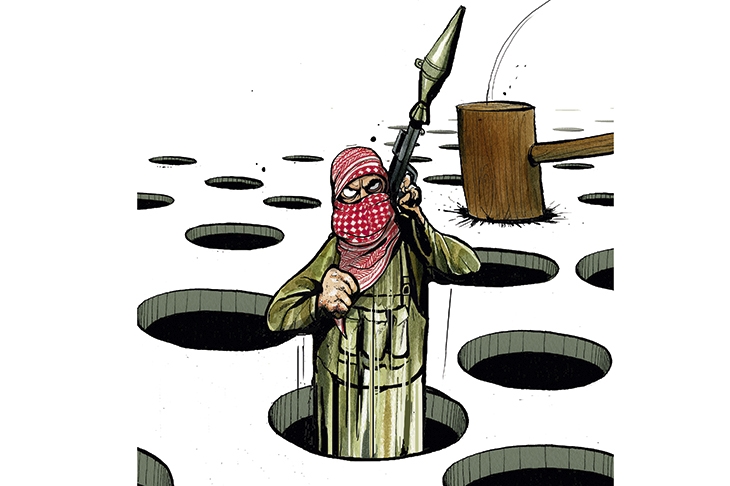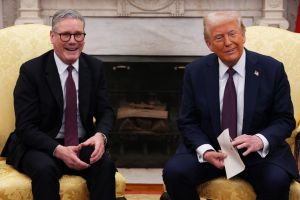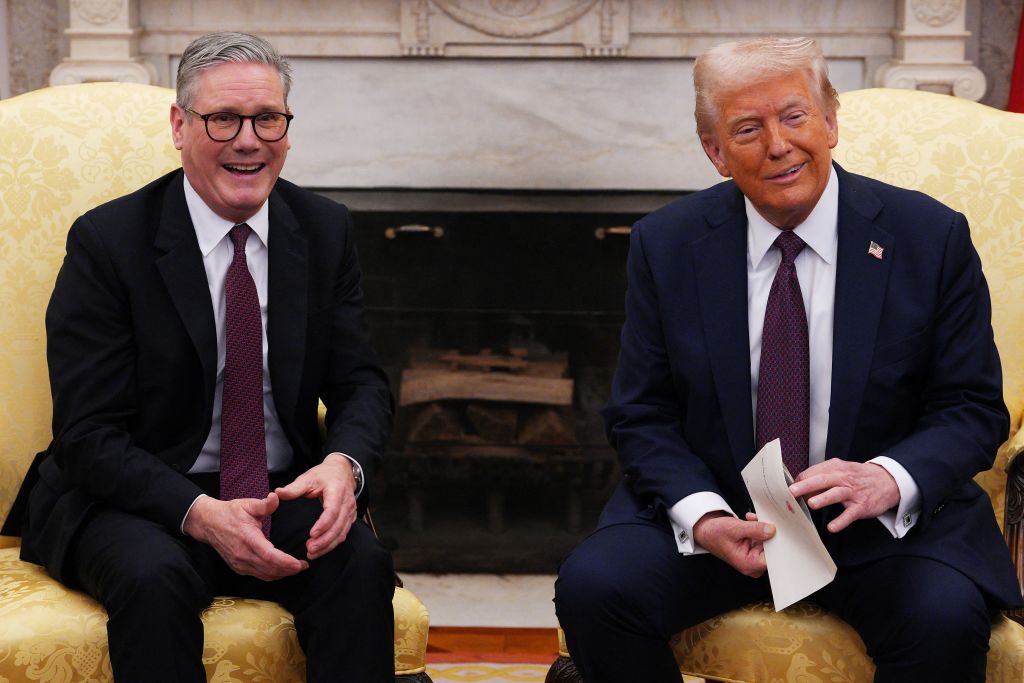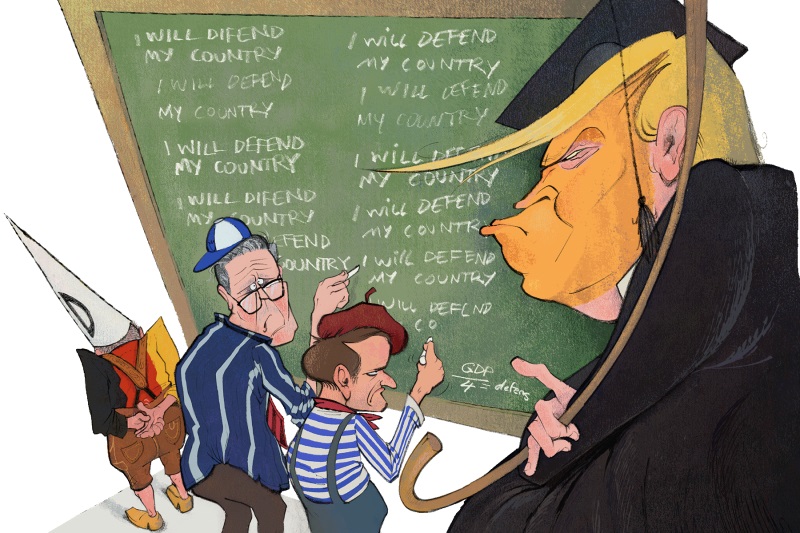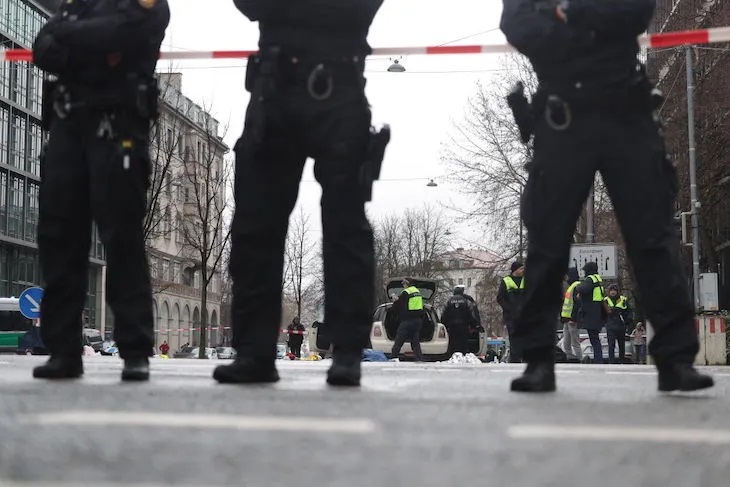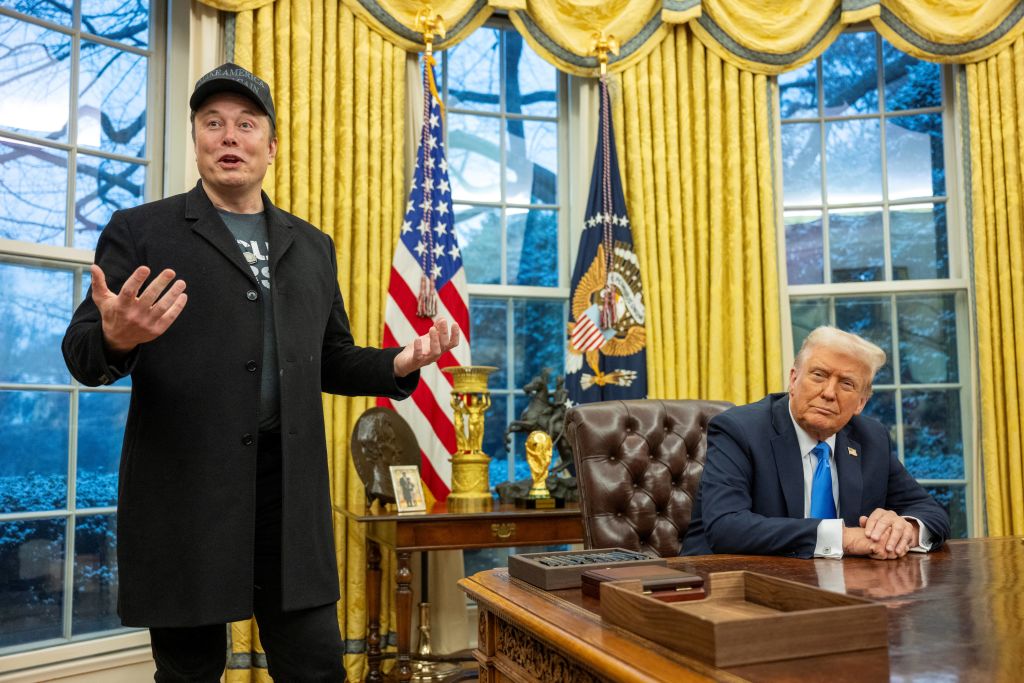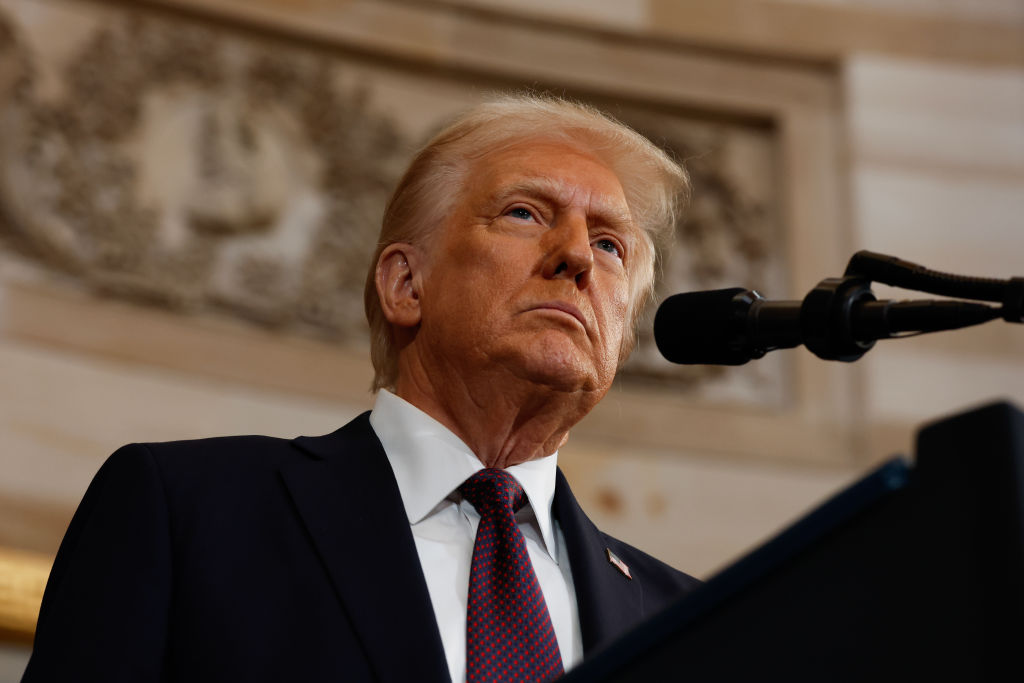In the weeks after the 9/11 attacks, Americans came together in a spirit of grief, resolve and shared national pride. It didn’t last long, but this potent energy animated the US military’s mission and a new generation of recruits who signed up to ‘do their part’ in the wake of the tragedy.
Twenty years later, it is not the same military. As an institution, its impunity, hubris and access to unprecedented financial spoils have led to corruption and mediocrity at the top. The exploitation of all-volunteer forces to fight protracted wars of choice without proper care and attention to their consequences has left veterans jaded and skeptical of the value of their service in a system that continues to fail them. And without candor now about what went wrong, another 9/11 event could again trigger the same egregious policies, and the same mistakes.
At the height of the wars, high-profile brass such as Gens. David Petraeus and Stanley McChrystal, who both led forces in Iraq and Afghanistan, showed themselves to be overtly political, out of touch and self-serving. They pushed troop surges while obscuring facts about true conditions on the ground. Critics say such men represent the modern senior officer corps, bred not for innovative and bold thinking but subservience to power, and that those who did push back during the wars were marginalized and squeezed out. As a result, the entire system became a steel bubble, with the rank and file left badly served by a simultaneously inflated and atrophying leadership.
The corruption of the post-9/11 wars spread in a variety of ways. The military took advantage of young, poor kids to fill recruitment quotas, with seemingly amazing opportunities like the ‘quick ship’ $20,000 enlistment bonuses they gave out during the height of the Iraq insurgency in 2007. Standards were lowered, waivers granted to felons. The US shipped out men and women with psychological profiles that should have set alarm bells clanging, and repeatedly redeployed already traumatized veterans.
As the post-9/11 years wore on, the civilian-military gap grew. With less than half of one percent of the population serving, many Americans stopped scrutinizing what the armed services were doing. By the time Eddie Gallagher was court-martialed for allegedly stabbing to death a teenage Islamic State fighter in Afghanistan and posing for a photo with his corpse, Americans had lost the capacity for outrage. Like the Bowe Bergdahl case before it, Gallagher’s story became so hyperpoliticized that no one had the guts to ask the real question — was endless war dehumanizing our celebrated special forces in the field?
‘So September 11, 2001 really did serve as a trigger for every bad idea that had been dismissed since the Cold War and Vietnam to be inserted into the military process — and they failed,’ says Doug Macgregor, a retired Army colonel. Macgregor, a hero of the Persian Gulf tank wars and a respected tactician, may have killed his own military career by questioning plans to send in hundreds of thousands of troops for the Baghdad invasion. In 2002, he famously told Centcom commander Gen. Tommy Franks and a roomful of brass that all they needed was 30,000 armored troops to be reinforced by another 15,000 infantry soldiers to ‘cross the Euphrates and get into Baghdad as quickly as possible’. The plan, he thought, should be to depose Saddam and ‘get out’.
‘Subsequently I wrote a memo saying everyone they had in [Army] command they had to get rid of because none of them had any experience with combat whatsoever,’ Macgregor tells me. ‘From the beginning I got nothing but resistance, no willingness to do anything that made any sense.’
The rest, as they say, is history. ‘The generals all marched in, occupying Saddam’s digs, signaling we were an occupying power. My opposition to all this made me persona non grata.’
Macgregor believes the proliferation of generals in the post-9/11 era has killed the military from the inside; the statistics are compelling. Writing for the National Defense University’s Joint Force Quarterly, Col. Gregory McCarthy records that in 2017 there were approximately 900 active-duty general-rank officers among the 1.3 million active-duty component: one for every 1,400 troops. During World War Two the ratio was one for every 6,000. This ‘rank creep’, according to McCarthy, ‘clutters the chain of command, adds bureaucratic layers to decisions, and costs taxpayers additional money from funding higher paygrades to fill positions’.
Macgregor is more blunt: ‘It’s just a bureaucratic nightmare at this point,’ he says. ‘The higher up the rank structure you go, the less substantive work you get. Headquarters tend to be places for sycophants. That’s been a huge problem for us.’
Efforts to deflate the bloat at the top have been largely unsuccessful, but Macgregor is right. Increasing the number of commands after 9/11 hasn’t made our military more successful, but it’s been a boon for those who know how to play the game. Rather than creative thinking and competence, he says, the institution rewards loyalty and political shrewdness, the defining qualities of career yes-men.
As the number of senior officers metastasized, so did unaccountability for losses in the field and corruption at home. Generals repeatedly testified that the war was ‘turning a corner’, and perennially pressed for more troops, without the follow-up that would have assessed results. Meanwhile, the military became riddled with scandal, with generals and admirals demoted, relieved of duty and even court-martialed for crimes ranging from fraud to sexual assault. Petraeus was charged with mishandling classified information when he let his mistress, a lower-ranking officer, read his personal diaries in the field and lied about it to the FBI. Some 19 current and former Navy officials have been convicted so far in the massive ‘Fat Leonard’ bribery scandal, in which officers were found to have directed Navy ships to Asian ports controlled by Leonard Glenn Francis, a portly Malaysian contractor who suborned them with gifts and parties. They include Rear Adm. Robert Gilbeau, who has the distinction of becoming the first flag officer in modern American history to be convicted of a felony while on active duty.
‘The system that’s evolved over the last 100 years does not test moral courage,’ retired Army officer Donald Vandergriff told me in 2014. ‘It does not test strength of character or the ability to tell the truth regardless of harm to one’s career… We don’t do things like that. We are looking at people who follow the process, fall in line, don’t cause waves, aren’t open to innovation, and these personality traits leave them open to scandal.’
Promoting people for the wrong reasons and then throwing a bunch of resources and power at them like blank checks was a recipe for disaster. As if the diffused responsibility at the top weren’t enough, the post-9/11 order also saw an unprecedented outsourcing of security and support capabilities.
Companies such as Halliburton and their subsidiaries won rights over multibillion-dollar Logcap (Logistics Civil Augmentation Program) contracts with little or no competition. A handful of top contractors dominated food, construction, security, IT and other services, and even when they knew they were being overcharged or stuck with shoddy work, the Pentagon continued to work with the same vendors. At the wars’ peak in 2010, there were more contractors (207,000) than US military (175,000) in Afghanistan and the Middle East.
‘There is simply no way that the active-duty US military as it is currently sized and structured would have been able to run the occupations of both Iraq and Afghanistan without the massive support of private military industry,’ says Peter W. Singer, a military analyst for the New America Foundation. In 2013, Singer wrote a paper for the Brookings Institution in which he warned against the military’s overreliance on contractors:
‘It has created a dependency syndrome on the private marketplace that not merely creates critical vulnerabilities, but shows all the signs of the last downward spirals of an addiction. If we judge by what has happened in Iraq, when it comes to private military contractors and counterinsurgency, the US has locked itself into a vicious cycle. It can’t win with them, but can’t go to war without them.’
The bad behavior of some contractors, as in the 2007 Nisour Square massacre in Baghdad involving private Blackwater guards, and their inevitable for-profit ethos made winning hearts and minds among civilian populations more difficult. It also allowed the military to carry on operations even as the number of active-duty troops was reduced. Last spring, as the US began its withdrawal from Afghanistan, 18,000 contractors, including 6,350 Americans, were still on the US payroll.
Mercenaries may well be the future of western warfare: they are quieter, less expensive and require less training and regulation. They also have their own interests, which is why governments have often preferred to develop and use their own forces. It’s hard to sustain a sense of mission based solely on paychecks, with few ties of patriotism or duty.
Of course, contractors take on many of the same risks as official military personnel. An estimated 8,000 contractors have been killed in the post-9/11 wars along with more than 7,000 US servicemembers. All are vulnerable to IED blasts, traumatic brain injuries, PTSD and respiratory illnesses including the cancers connected to the burning of unregulated trash pits on major forward-operating bases; contractors are not offered the healthcare that the US military provides.
And there will be long-term need for that healthcare. Some 92 percent of those wounded in battle survived our recent wars, compared to 75 percent in Vietnam. That’s good news, but it means enormous lifelong healthcare costs. As of 2018, according to Brown University’s Costs of War Project, the 4.1 million post-9/11 veterans make up about 16 percent of those served by the Department of Veterans Affairs, and are as a group less healthy than veterans of earlier wars. ‘The VA estimates,’ says the study, ‘that the 10 year cost of caring for post-9/11 veterans with traumatic brain injuries (TBI) alone will be $2.4 billion from 2020 to 2029’, and future expenses are estimated to run into the trillions.
It’s not as if healthcare for veterans is at all adequate, given the sacrifices we expect the men and women of our armed services to make. The rush to fight a two-front conflict in Afghanistan and Iraq left huge gaps in medical-care access which linger still. Veterans still experience cruelly long wait times, particularly for mental health treatment.
This catalogue of problems has left the US military deflated and depressed. Poll after poll finds that Iraq and Afghanistan veterans not only favor full withdrawal from those wars, but now believe they were not worth fighting in the first place. This is an extraordinary indictment of the conflicts themselves and shows profound loss of faith in the institutions that led the country into them.
‘No one is drinking the Kool-Aid anymore,’ says Gil Barndollar, who served as a Marine infantry officer in Afghanistan for two tours between 2009 and 2016. He reports that his peers are glad the US is leaving Afghanistan and long ago shed their illusions about solving the problems there. He’s most incensed about the ‘lack of moral courage’ within the military.
On a practical level, Barndollar says, the real challenge today is the strain on the National Guard and Reserves. National Guard members made up 45 percent of the overall deployments in the Global War on Terror, and 18 percent of the casualties. The ideal of the part-time citizen soldier is long gone. To this day, National Guard units are engaged in routine deployments, with equipment sent overseas that should be stateside. There are significant new domestic duties the Guard is expected to deal with as well: patrolling borders, dealing with protests and natural disasters, helping in the fight against COVID-19.
‘I’d like to hope the rising generation of military leaders — today’s colonels — who grew up as lieutenants and captains in Iraq and Afghanistan, have the moral courage to tell future politicians and their appointees what the US military can and can’t accomplish,’ Barndollar concludes. ‘Will any of these future generals have the integrity to put their stars on the table when the time comes?’
This article was originally published in The Spectator’s September 2021 World edition.



